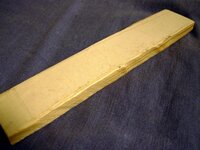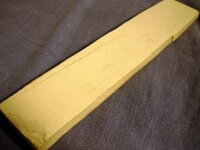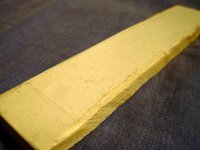Scooley01
Member
I read a little about it, and I'm very interested! I love some of the patterns that can be produced...and it seems relatively simple. Here's a site I found where it's made for knife handles:
LM105
LM105Pt2
http://www.fendleyknives.com/LM105Pt3.htm
That said, a knife handle is very different than a pen, and I don't know if it would turn easily enough...but it looks great! Anyone have experience here?
LM105
LM105Pt2
http://www.fendleyknives.com/LM105Pt3.htm
That said, a knife handle is very different than a pen, and I don't know if it would turn easily enough...but it looks great! Anyone have experience here?









